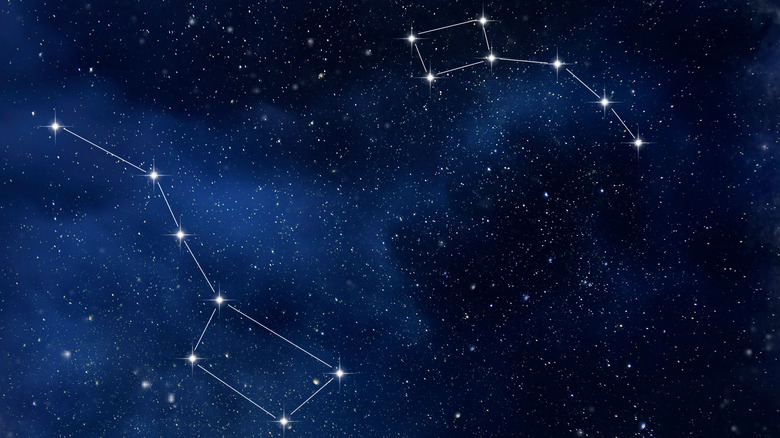Here's How To Find The North Star
"I am constant as the Northern Star / Of whose true fixed and resting quality / There is no fellow in the firmament," wrote Shakespeare in his play Julius Caesar.
What the famous bard is referring to is that Polaris, the North Star, is always in the same place in the northern hemisphere's night sky, according to Science Focus. Other stars and constellations may come and go with the seasons, such as the stars along the ecliptic, but Polaris — actually three stars that appear as one to the naked eye — stays still, and has for centuries.
Don't mistake Polaris for the brightest star in the sky — that would be Sirius, though you also might mistake Venus, the brightest object that isn't the sun or moon, for a star. On Earth, we can recognize Polaris as the brightest star in Ursa Minor (the Little Dipper), but Ursa Minor can be a little tricky to find. So how do you find the North Star?
The pointer stars
Imagine you're a sailor and your compass fell overboard. Oops. How do you know which way points north?
First, find Ursa Major, says NASA. Better known as the Big Dipper or the Plough, it's one of the most recognizable constellations there is, so hopefully you can make it out. You should see a rectangle of four stars that make up the constellation's bowl, and then several other stars that create the constellation's handle.
Look at the two stars on the side of the bowl furthest away from the handle. These are the pointer stars. Follow these stars in a straight line, toward the top of the "cup" (the side with the handle on it). This will lead you straight to Polaris, at the tip of the handle on the Little Dipper.
For modern readers, the polestar is almost exactly above the North Pole. But if you're reading this several millennia in the future, you'll need to seek out new instructions, since the Earth's tilt will be slightly different. The next North Star will be Gamma Cephei, in the constellation Cepheus, according to Science Focus.

